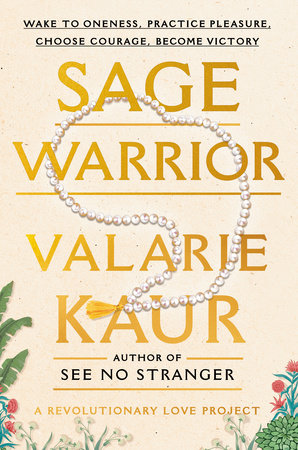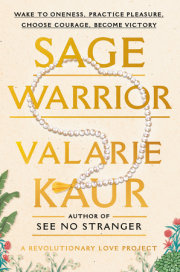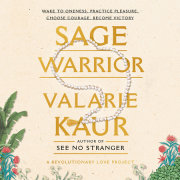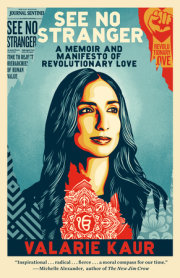In a time before memory, five great rivers poured down from the Himalayas and flowed into a vast fertile plain, nourishing fields and forests. The people who churned the soil called the land Punjab, the land of five rivers, and for millennia the waters of Punjab carried the dreams of civilizations. On this land, on soil as ancient as time, a woman labored in a mud hut. Her name was Tripta. She labored all night, breathing and pushing, until she heard the cries of a newborn.
Tripta was a mother now, a Mata. She looked down at the baby on her chest. The newborn’s eyes opened for the first time; the room filled with light.
A shadow appeared at the doorway. Mehta Kalu was out of breath. He stared at the newborn on his wife’s chest. He grunted, patted her arm as if she had just done his laundry, and took his leave.
Mata Tripta looked blankly at the doorway where her husband had gone. She closed her eyes. What kind of future awaited this child?
“Shhhhh,” cooed Mata Tripta’s mother as she picked up the baby, who had started crying.
“Put, eh hai tere Nankeya(n) da ghar,” her mother, Mata Bhirai, whispered to the baby. You’re in your Nanke’s home, dear one—the home of your mother’s family. She hadn’t heard her mother use that sweet singsong voice since she was a child in this house.
“Nanke, Nanke,” Mata Tripta whispered. It means the home of your mother’s family. But she savored the deeper meaning in the word. Nanke: the place where you are always at home. She wanted her firstborn always to feel at home in the world. As she slipped into sleep, she knew the child’s name.
Her name was Nanki.
*
Nanki was radiant. At five years old, she had eyes that sparkled and a heart that erupted with wild bursts of affection. She kissed her mother’s neck ceaselessly when her mother cried; when her father shouted, she rested her hand on his forearm until he stopped; and when she was sent out of the house until the storm passed, she played with the lime-green parakeets in the ber trees above her. Nanki took to wearing bells around her ankles so that music would follow her wherever she went. Music followed her as she washed dishes, churned butter, and lit oil lamps at night. Music followed her as she took food to her Dadke, her father’s parents, who lived next door. And music followed her to the stream where she fetched water every morning.
One morning, Nanki paused on the bank and gazed into the water, mesmerized by how the sun rippled on the current. The earth warmed her bare feet. A strong wind rustled the trees, and the next moment, she felt the wind kiss her cheek. Making sure no one was looking, she set down the pitcher and—Nanki danced.
She started slowly, lifting her arms to the sky like those traveling minstrels who had come through the village. Her fingers made the shape of blossoming flowers. She pounded one foot into the earth—ta!—then the other—tei! Her bells rang out. She pounded her feet faster, making a glorious little cloud of dust. The bells sounded Cha-na-na-na! Nanki sang. She didn’t know the words she was singing, or if they were words at all. But her voice was soaring, and her body spinning, and the world was whirling with her—the wind was her beloved! the water her father! the earth her mother! Nanki was in vismaad—ecstatic wonderment.
Nanki collapsed on the earth, laughing. She looked around, wanting to share the splendor. But she was all alone. So, she gathered up some twigs and leaves, wrapped a loose thread from her salvaar kameez around the middle, and made a doll. She carried the guddi home, along with the pitcher on her head.
When she got home, Nanki’s mother stitched her a proper cotton doll out of old dupattas and leftover string from all the prayers and pleas she was making at holy places.
One day, Mata Tripta scooped her daughter onto her lap, and smiled with watery eyes.
“I’m carrying a baby under my heart,” she said.
Nanki squealed and hugged her mother’s neck so tight that Mata Tripta had to pry her loose.
As spring arrived, the wheat mills hummed across the countryside, sugarcane blushed green, and ber trees sagged under the weight of fresh berries. Nanki waited for the baby to come into the world. She awoke in the night from a loud guttural wail, just in time to see the midwife Daultan lean over her mother’s cot and cut a silvery-blue cord. Nanki rushed to her mama’s side, her bells jingling after her. Daultan was studying the infant curiously. No cries. Just a laughing gurgle. The baby wiggled across Mata Tripta’s body, found her breast, and suckled. Nanki smelled the blood and milk. She gazed at his fresh round face and small fingers. Overcome with joy, she started to hum. The room filled with light; Nanki was in love.
When no one was looking, Nanki dipped her finger into a bowl of shakkar, powdered jaggery, and pressed the sugary grains to her brother’s mouth as his blessing: May your life be sweet.
Thirteen days later, the Hindu priest Pandit Hardyal arrived for the newborn’s naming ceremony. Smoke from the incense filled the room. Nanki traced the embroidery in her new orange phulkari shawl—the shape of marigolds, blossoming forth.
“Nanak,” her father announced proudly.
Nanki was only five years old, but her love for her brother was so beautiful, her passion so pure, the family decided to name him after her. Nanak after Nanki. It was a rare name: Nanke means one’s mother’s family. So it was that the little boy Nanak—born in the village Talvandi in the Majha region of Punjab, in the springtime of Vaisakhi—was named after his sister and the great maternal heart where we are at home in our body and at home in the world.
*
Nanki carried her brother everywhere, singing, her bells jingling after her. She taught him how to sit up when he was seven months old and to crawl at nine months. By a year and a half, he was talking to her. At five years old, Nanak was herding cows and buffalos in the countryside as Nanki kept watch over him from the threshold of the house.
One day, Nanak stood very still in the fields. A tree rustled in the wind, a buffalo grunted, a serpent slipped behind a rock, and his little body shivered. Nanak began to sing. Nanki smiled. He was letting beauty ripple through his body. Nanak was in vismaad, ecstatic wonderment.
Nanki hummed along to his song. Until her father came home.
Mehta Kalu was the pattvari of the village, chief accountant of crop revenue, a respectable man of numbers and ledgers. Just like his father before him. When Nanak was born, he had boasted loudly in the village of the priest’s prediction that his son would become a great man. It was written in the stars! But the prediction would not come true if the boy was daydreaming all the time. Mehta Kalu was about to march into the fields, but Nanki placed her hand on her father’s forearm. The great burly man softened and merely told his son to get back to work.
When Nanak turned nine years old, it was time for his thread ceremony, the Yajnopavit, where he would be inaugurated as a man and wear the janeu, a cord that looped around his neck and went from left shoulder to right hip. The thread would mark him as a high-caste Hindu man, just like his father and his father before him. It was supposed to be a day of glory. But as the day approached, the children grew quiet and sallow-faced. As a girl, Nanki would never be given such an esteemed ceremony. Mata Tripta noticed her children whispering at night.
On the morning of the ceremony, Nanak appeared bare-chested, wearing a white dhoti around his waist. He took his seat on a raised platform of mud and brick. He faced Pandit Hardyal as the ceremony began. Nanki held her breath. The priest lit lamps, burned incense, and drew symbolic figures on the ground with flour. He gestured to Nanak’s father, who boomed, “Kalyan Chand Das Bedi!” It was his full caste name. He was a Bedi Khatri—a lineage of Kshatriya warriors renowned for their learning of the holy texts, the Vedas. Pandit Hardyal chanted the prescribed mantras over a cocoon of cotton cord. When he reached to place the janeu over the boy, Nanak refused the thread and stood.
Nanak cleared his throat, and his little voice rose into a cadence:
daiyaa kapaah santokh soot jat ganddee sat vatt
eh(u) janeuoo jeea kaa haee ta paadde ghat
naa eh(u) tuttai na mal lagai na eh(u) jalai na jaey
Make compassion the cotton
contentment the thread
virtue the knot
and truth the twist
This is the sacred thread of the soul
If you have it, go ahead and put it on me
Such a thread will neither snap nor soil
get burnt or lost
Copyright © 2024 by Valarie Kaur. All rights reserved. No part of this excerpt may be reproduced or reprinted without permission in writing from the publisher.







